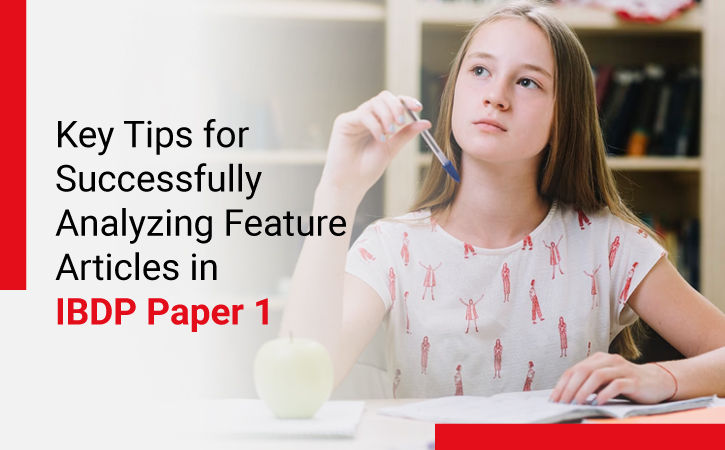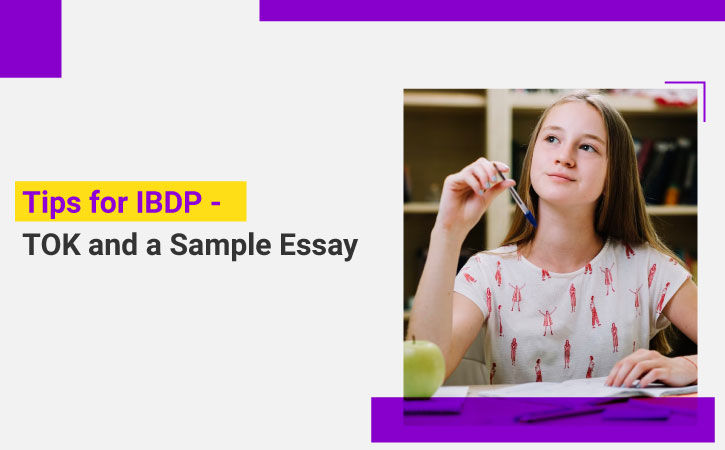

The International Baccalaureate Diploma Program (IBDP) is one of the four programs the International Baccalaureate offers. This program is recognized and appreciated by leading universities around the world and there is proof suggesting higher rates of DP students getting into universities and higher education studies compared to non-IB students. This program targets students in the age groups 16-19 years and is a rigorous, demanding yet rewarding program. The IB DP qualification not only provides academic excellence but also transforms the students to become socially conscious, enabling them to contribute to society even after they complete their education.
The IB Diploma Program covers two components – six subject groups and the three DP core elements.
DP Core – Theory of Knowledge (TOK), Extended Essay 9EE), and Creativity, Activity, Service (CAS)
Subject Groups – Language and Literature, Language Acquisition, Individuals and Societies, Sciences, Mathematics, and Arts.
Each subject in turn is offered at two levels considering the differing abilities of the students – Standard Level (SL) and Higher Level (HL).
Each student need to select different courses from the six subject groups – at least three from the Higher (HL), but not more than four, and remaining from the Standard Level (SL).
While the grading is measured similarly, the two levels- SL and HL, differ in learning scope, concepts taught, and subject understanding. HL subjects require a student to take 240 learning hours, while SL subjects, 150 teaching hours. Assessments are both internal and external. The DO Core can contribute up to 3 points toward the final Diploma score of the student. Grading for each subject is in the range 7 – 1, 7 being the highest and 1 the lowest.
As a part of the IB DP, students take at least one subject from the area of Language and Literature. Taking two languages from that area is one way of getting a bilingual Diploma. English Language and Literature are the most commonly taken courses.
Aims of the course are to enable the students to
| Type of Assessment | Format of assessment | Time Duration SL | Time Duration HL | Weighting of final grades SL | Weighting of final grades HL |
| External | |||||
| Paper 1 – Guided textual analysis | Guided analysis of unseen non-literary passage/passages from different text types | 1.25 hours | 2.25 hours | 35% | 35% |
| Paper 2 – Comparative Essay | Comparative essay based on two literary works written in response to a choice of one out of the four questions | 1.75 hours | 1.75 hours | 35% | 25% |
| HL Essay | Written course work component, 1200 -1500 worded essay on one literary work or a non-literary body of work studied | 20% | |||
| Internal | |||||
| Individual Oral | Prepared oral response on the way one literary work and a non-literary body of work studied approached a common global issue | 30% | 20% |
The English Literature focusses on the analysis of literary works and how authors convey their ideas, on the other hand English Language and Literature apart from literary works also covers non-literary works like advertisements, music lyrics or political propaganda.
Paper 1 of the study is the most difficult to prepare for though you can have practice in the style or format of writing, but the text you are going to analyze on the day of the examination is mysterious and unseen – you have never come across those texts. Unless you are lucky!! The IB evaluates your ability to write a guided textual analysis and write a commentary on your observing and findings.
Guided Literary Analysis for SL students –The text contains two unseen non-literary passages. Students need to choose one and write a guided analysis on it. A guided analysis refers to exploring of the passage supported by a guiding question One guiding question will be provided for each of the passage. And this questions can be used as point of entry into the text. Maximum marks for this paper is 20.
For the HL students, the format slightly varies as the students need to attempt both texts and write a guided literary analysis for each of them separately. The maximum marks allotted are 40 – 20 each for both texts.
For English Literature, (both SL and HL) texts are poems and prose excerpts from a novel or short story
For English Language and Literature SL, both the texts are from a broad variety of sources – manuals, magazines, cartoon strips, magazines, editorials, advertisements, interview scripts.
Analysis aims at increasing the reader’s understanding of the given article’s thesis and content. The analysis of the article is subjective as it expresses the reader’s analysis, opinions, and ideas. Basically, analysis is nothing but breaking down and studying and thus evaluating the parts of the article. You need to identify what type of article is presented so that you bring out the right tone and format of your analysis report. Make sure to present the analysis in a way that your audience is able to understand without much difficulty.
When you read the article, decipher the author’s main points and thesis. Give yourself the right duration of time to read and gather your points. You can also make notes as you read. Most importantly look for the purpose the author has penned the article as there are various reasons, he might have had to write – inform, persuade, or entertain his reader. Depending on what is presented – the evidence, supporting statements/arguments, or the emotions – understand what exactly the purpose is.
Now start working on the outline of the analysis. Make sure to
Manya – The Princeton Review offers end-to-end study abroad services encompassing admissions consulting services, test preparation, English language training, career assessment, and international internship opportunities to study abroad aspirants. Founded in 2002, Manya holds an impeccable track record of enabling more than 4 lac students to accomplish their study abroad dreams through its network of 47+ centers across India.
Manya has formed long-lasting global alliances with several market leaders in the education industry in order to maximize the benefits of its large service portfolio. Their list of esteemed partners and affiliations includes – The Princeton Review (TPR), Cambridge University Press (CUP), Cogito Hub, British Council, Tuding to name a few. Manya has also forged 600+ partnerships with international universities across top study abroad destinations.
Book your Free Counselling Session now!A feature article is a type of journalistic article that focuses on a particular topic, issue, or event. It is characterized by its in-depth reporting, and extensive research, and often includes personal perspectives and opinions.
IB DP paper 1 is an examination paper that assesses a student’s ability to analyze and interpret literary texts. It is a part of the International Baccalaureate Diploma Program (IBDP) and is taken by students in their final year of high school.
The format of IB DP Paper 1 includes a passage or passages from literary texts, followed by a series of questions that require students to analyze and interpret the text. Students are typically required to write a structured essay in response to the questions.
To analyze a feature article IB DP Paper 1, it is essential to identify the author’s purpose, audience, and tone. You should also consider the structure of the article, the use of language and literary devices, and the impact of the article on the reader.
Some common literary devices used in feature articles include imagery, symbolism, irony, foreshadowing, and metaphors. These devices can be used to convey meaning and add depth to the article.

Tips for IBDP-TOK and a Sample Essay